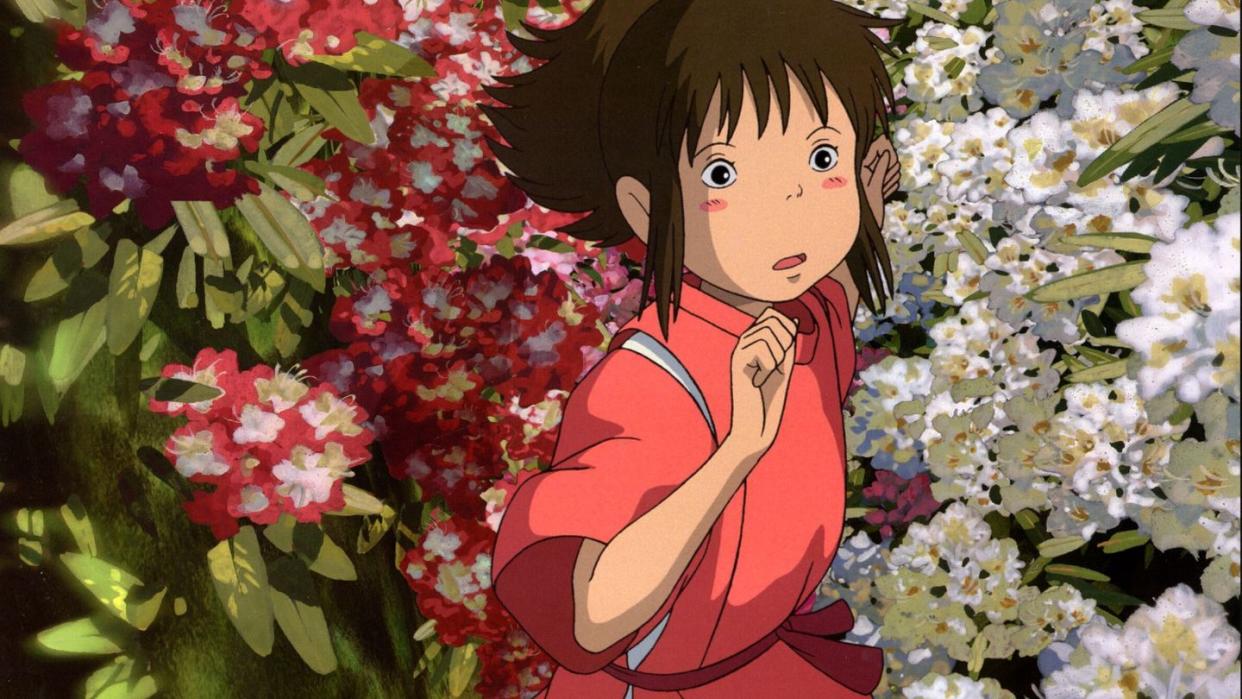So You Want to Dive into the Studio Ghibli Catalog. Here's How to Start.

Like that of its close (but not identical) cousin, anime, the Studio Ghibli oeuvre has been making inroads with stateside audiences for years, chipping away at language barriers and Western-centric tastes to create a dedicated and passionate fanbase. Now there’s a new film out from the studio, The Boy and the Heron, which has been nominated for an Academy Award in the Best Animated Feature category, and some aficionados are ranking it at the top of Ghibli’s collected works. Fortunately, the studio's earlier movies are available to stream and viewers can judge for themselves. These animated films are poised to take over, and entertain a whole new generation of young converts—because, let's be honest, some of Hayao Miyazaki's work blows Disney's out of the water.
Many of Studio Ghibli's top films are now available on Max. It's an intimidating number for those who aren't sure where to start—and, honestly, some of the movies are best experienced after you've been fully indoctrinated into the Ghibli world. Newcomers might not be as enraptured with the somber subtleties of The Tale of the Princess Kaguya or the laughs of Porco Rosso.
As for the enduring question—whether to watch in the original Japanese with subtitles or opt for the English dub—I'll leave that up to you. I watch new anime with subtitles as a rule, but my Howl from Howl's Moving Castle will always Christian Bale's sullen inflection.
Below, a suggested watchlist of the studio's enduring masterpieces.
Spirited Away (2001)
Spirited Away isn't considered a jewel in Studio Ghibli's crown for nothing. From the first frame, it's enthralling, whisking the viewer across a curious border to a spirit world filled with wonders and dangers in equal measure. The plot unfolds like a matryoshka doll of gifts, each new room entered or character met promising fresh, curious marvels. And although all Ghibli movies are appropriate for all ages, Spirited Away may be the best suited to truly cross-generational appeal, offering depth of character and story while steering clear of outright terror.
See the original post on Youtube
Princess Mononoke (1997)
Princess Mononoke, on the other hand, does get genuinely scary. Miyazaki weaves environmental themes into nearly all of his work, and in this film, they're at the forefront. A mining colony is threatening its natural surroundings, and the forest gods are hitting back, lead by the curious Princess Mononoke. The artwork is breathtaking—sublime in the way the Romanticists imagined the concept—and the movie's overall effect is unforgettable. (I first saw it over a decade ago, and the little forest spirits still pop up occasionally in my dreams.)
See the original post on Youtube
Howl's Moving Castle (2004)
I'll acknowledge my bias upfront: Howl's Moving Castle is the movie I've seen more than any other, and probably my favorite. I'd press play on this DVD after a hard day in sixth grade, and even today, there's nothing that soothes me like its lilting, melancholy soundtrack. I can't promise that everyone will be as taken with this movie as I am, but I can guarantee an enchanting ride. Adapted from Diana Wynne Jones's beloved novel, the story follows a shy young milliner who crosses paths with a vengeful witch, and finds herself transformed into an old woman. She's taken in by Howl, a womanizing, delinquent wizard, and it only gets more fantastical from there.
See the original post on Youtube
Nausica? of the Valley of the Wind (1984)
Another powerful allegory about climate change and war, Nausica? of the Valley of the Wind is set in a kingdom besieged by battling nations and monsters from a neighboring toxic jungle. The world-building is fascinating and takes unexpected turns as Nausica? ventures further beyond the walls of her home.
See the original post on Youtube
Castle in the Sky (1986)
Two kids discover a crystal and find their way to a magical floating city, which has long since begun to decay—but among the ruins, there's plenty of magic to be found. Castle in the Sky represents much of what Miyazaki's best known for: fantastical worlds, a sense of adventure, and a faith in children's potentiality.
See the original post on Youtube
My Neighbor Totoro (1988)
Among Miyazaki enthusiasts, placing Totoro this far down the list may be a little blasphemous, but I have to speak my Ghibli truth. This movie is absolutely delightful, and definitely yielded some of the studio's most beloved characters—I mean, I'm wearing Catbus slippers as I write this. Still, I think because I came to it relatively late, after I'd already developed a taste for epics like Princess Mononoke, My Neighbor Totoro just seemed a touch less spellbinding than some others on this list. (If you're watching with kids, though, maybe bump this one up your queue.)
See the original post on Youtube
Ponyo (2008)
Ponyo is Miyazaki's playful retelling of Hans Christian Anderson's The Little Mermaid—and, unlike the classic Disney rendition, this one doesn't have any questionable gender politics at its center. The undersea world the mermaid comes from is also far more imaginative, and the small town she arrives in, charming. There, Ponyo learns about family, growing up—and, yes, the wonders of ham.
See the original post on Youtube
Kiki's Delivery Service (1989)
Kiki's Delivery Service is another classic children's movie (though, like all Studio Ghibli films, it remains endearing well into adulthood). Kiki is a young witch making it on her own for a year, and running her own, yes, delivery service. Plucky and determined, she's got all the makings of a heroine—and her cat Jiji makes an excellent sidekick.
See the original post on Youtube
You Might Also Like